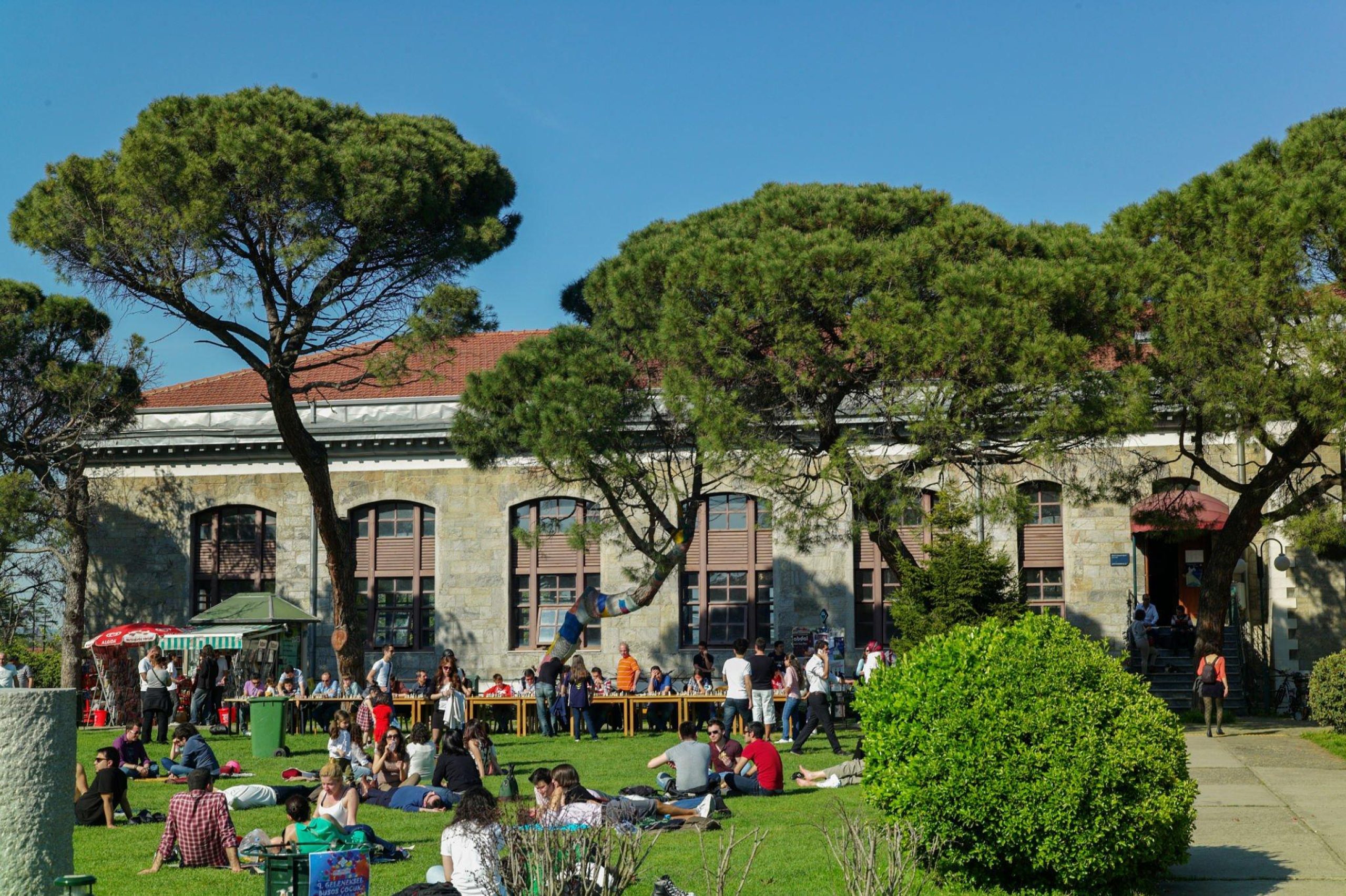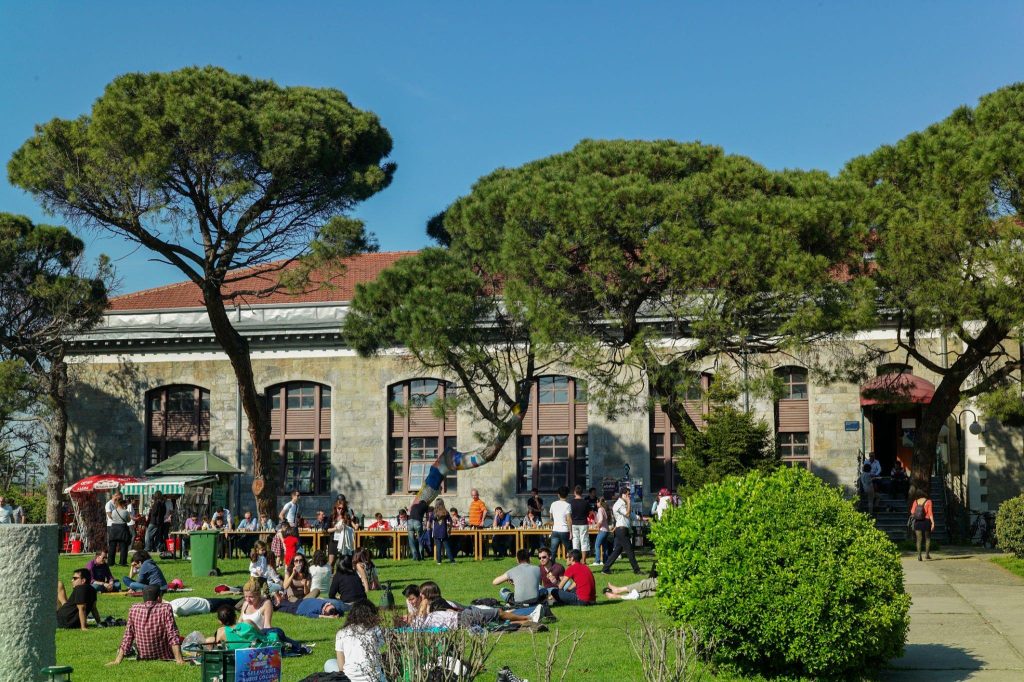Contents
- 1
- 2 the Hagia Sophia (Aya Sofya)
- 3 Blue Mosque
- 4 Basilica Cistern
- 5 Hippodrome
- 6 Ottoman Empire at the Topkapi Palace
- 7 Spice Bazaar
- 8 Süleymaniye Camii (Suleymaniye Mosque)
- 9 Treat yourself at the Suleymaniye Hamam (Süleymaniye Hamamı)
- 10 Enjoy the view from the Galata Tower
- 11 Take a cruise on the Bosphorus
- 12 Go shopping at the Grand Bazaar
- 13 Indulge in Meyhane Culture
- 14 Eat some of the Best Baklava in the World
- 15 Little Hagia Sophia (Church of St. Sergius and Bacchus)
- 16 Sokollu Mehmet Pasha Mosque (Sokullu Mehmet Paşa Camii)
- 17 Istanbul Archaeological Museums
- 18 Rustem Pasha Mosque (Rüstem Paşa Camii)
- 19 Istanbul Modern
- 20 Theodosian Walls
- 21 Maiden’s Tower
- 22 Conclusion
Istanbul, historically known as Byzantium and later Constantinople, is a mesmerizing metropolis where the East gracefully intertwines with the West. Situated on the crossroads of two continents, Europe and Asia, this city is a vibrant tapestry of cultures, flavors, and remarkable epochs.
The illustrious past of empires that once called it their capital – Roman, Byzantine, and Ottoman – has gifted Istanbul with an unparalleled heritage.
From the architectural wonder of the Hagia Sophia, which has stood the test of time and regime changes, to the enchanting call to prayer that resonates from the majestic Blue Mosque, Istanbul’s essence is a blend of the ancient and the modern. Similarly, when exploring the rich tapestry of American states, one cannot overlook Oklahoma and its captivating history. To delve into the essence and heritage of this remarkable state, check out “The Legacy of Oklahoma” on Tales of Travelers for an in-depth exploration of what makes Oklahoma truly special.
This unique fusion of history and progress makes Istanbul a city known for its rich cultural tapestry, and you can explore more about its fascinating heritage on our page dedicated to Innovative Technology in Istanbul.
Dive deep below the city’s surface, and you’ll discover the Basilica Cistern, an underground marvel of the Byzantine era. Above ground, the bustling streets lead you to the heart of the Ottoman Empire at the opulent Topkapi Palace. And as the sun sets, the aromas from the Spice Bazaar beckon, while the allure of shopping in the world-renowned Grand Bazaar is hard to resist.
the Hagia Sophia (Aya Sofya)
The Hagia Sophia, also known as Aya Sofya, remains a pinnacle of architectural grandeur in Istanbul. A symbol of the city’s rich history, it has seen empires rise and fall since its initial construction in the 6th century as a Byzantine cathedral.
Its magnificence has captivated global attention from the moment it was built. If you’re fascinated by locations with unique cultural and historical offerings, you might also enjoy exploring Vermont’s thriving Craft beer scene.
The Hagia Sophia’s architecture is a marvel that seamlessly blends the grace of Byzantine design with elements of Islamic influence, a reflection of the city’s transformation from Byzantium to Constantinople and finally to Istanbul. Its massive dome, innovative at the time, has inspired generations of architects.
Blue Mosque
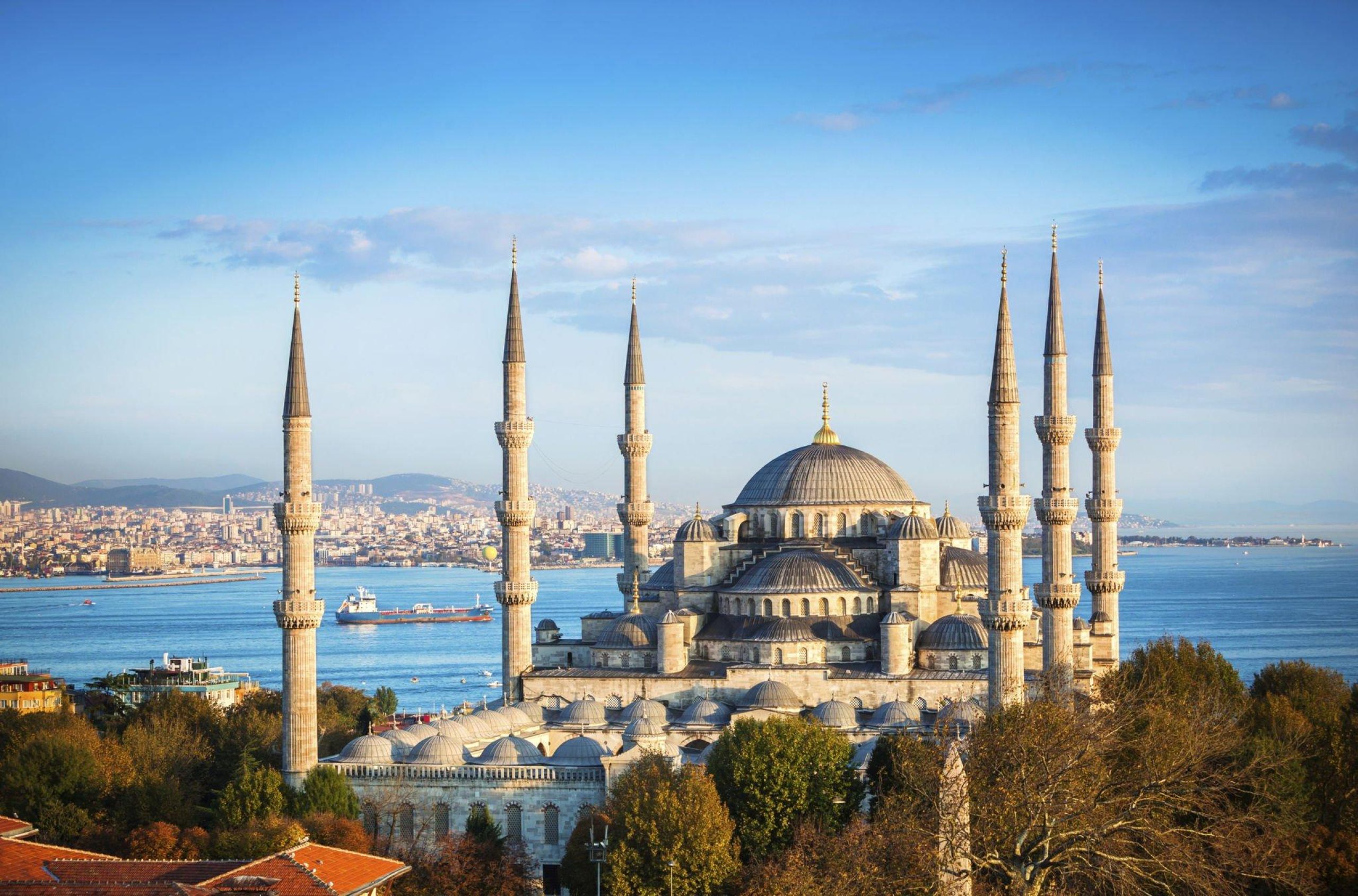
The Blue Mosque, officially known as the Sultan Ahmed Mosque, stands as a symbol of Istanbul’s grandeur and architectural prowess. Situated in the heart of the city, this majestic mosque is an epitome of Ottoman architecture and a testament to the city’s rich history.
Commissioned by Sultan Ahmed I in the early 17th century, the Blue Mosque’s design was a response to the grandeur of Hagia Sophia. Its intricate exterior is adorned with delicate blue tiles that give it its renowned name. These tiles, handcrafted with meticulous artistry, create a breathtaking sight that evokes a sense of tranquility and awe.
Basilica Cistern
Hidden beneath the bustling streets of Istanbul lies a remarkable architectural wonder known as the Basilica Cistern. This ancient subterranean reservoir, also referred to as the “Yerebatan Sarnıcı” in Turkish, stands as a testament to the engineering prowess of the Byzantine Empire. Just as Istanbul boasts its historical wonders, cities around the world have their unique features. For instance, Sacramento is celebrated for its Urban green spaces, offering residents and visitors a refreshing escape in the heart of the city.
Constructed during the reign of Emperor Justinian I in the 6th century, the Basilica Cistern’s purpose was to provide a stable water supply for the city during times of drought or siege.
The cistern’s name is derived from its location, which was beneath the site of a former basilica. Its vast dimensions are awe-inspiring – capable of holding over 80,000 cubic meters of water. Rows of slender marble columns, totaling 336 in number, support the cistern’s roof, creating a mesmerizing forest-like ambiance as they stretch into the darkness below.
Hippodrome
The Hippodrome, an ancient marvel nestled in the heart of Istanbul, whispers tales of glorious pastimes and grand spectacles from a bygone era. Once the epicenter of Byzantine social life, this historic chariot racing arena was a hub of excitement, entertainment, and communal gathering. If you’re interested in exploring similar cultural gems in Oklahoma City, you might want to check out this page on “cultural gems in Oklahoma City” over at Tales of Travelers.
Spanning the landscape where the Sultanahmet Square now stands, the Hippodrome was originally constructed during the reign of Emperor Septimius Severus in 203 AD. Over the centuries, it witnessed numerous expansions and renovations, evolving into a grand arena capable of accommodating thousands of spectators.
Ottoman Empire at the Topkapi Palace
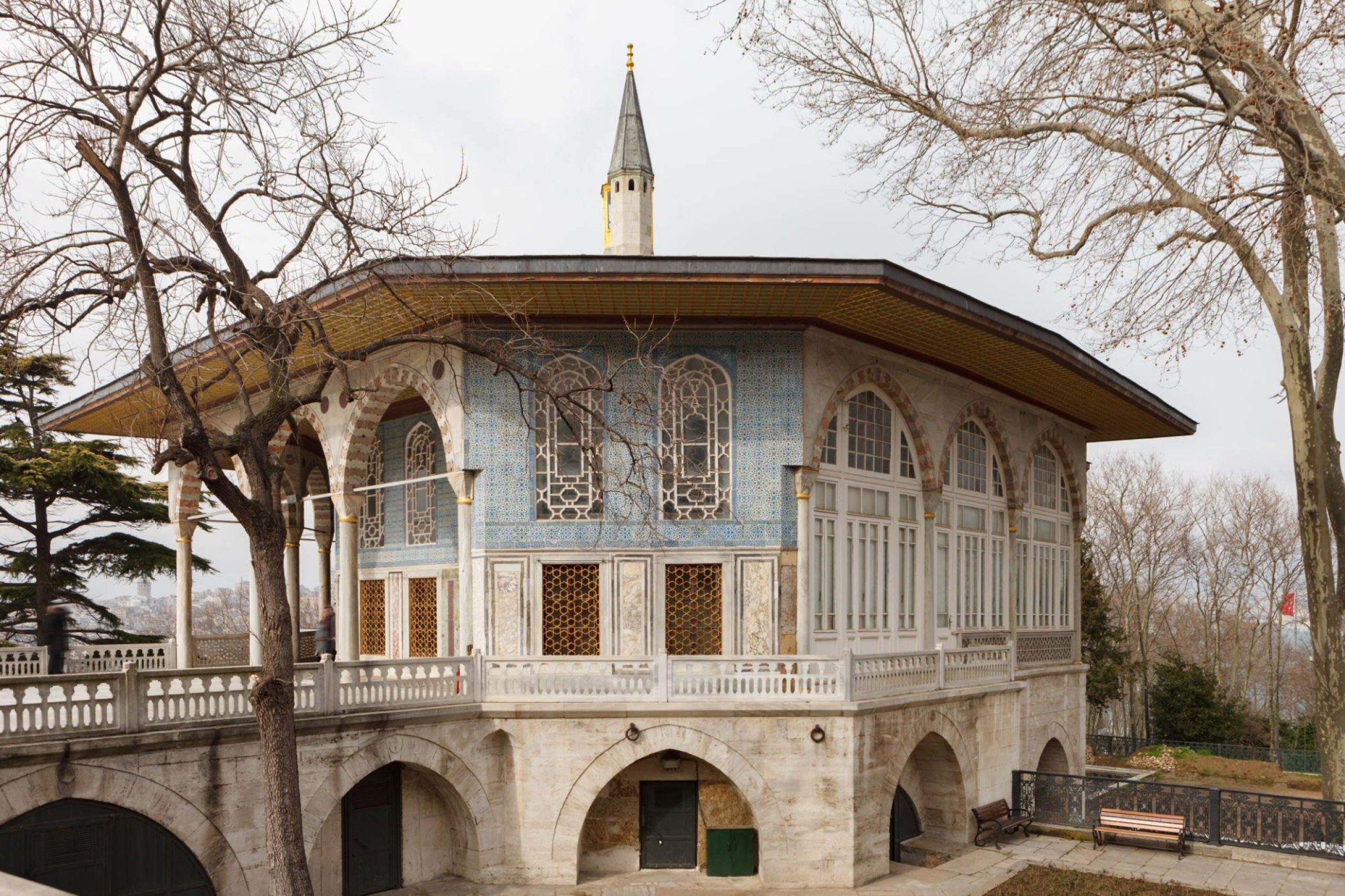
Topkapi Palace, a resplendent jewel nestled in the heart of Istanbul, offers a captivating glimpse into the opulent world of the Ottoman Empire. As the imperial residence for over four centuries, the palace stands as a testament to the grandeur and sophistication of a bygone era.
Perched majestically on a promontory overlooking the Bosphorus, the Golden Horn, and the Sea of Marmara, Topkapi Palace showcases a harmonious blend of intricate architecture, lush gardens, and exquisite courtyards. Stepping through its gates, visitors are transported to an era of sultans, harems, and royal intrigues.
Spice Bazaar
The Spice Bazaar, known locally as the Mısır Çarşısı, is a captivating marketplace nestled in the heart of Istanbul. With its kaleidoscope of colors, intoxicating aromas, and bustling energy, this bazaar offers a sensory experience like no other.
Dating back to the 17th century, the Spice Bazaar has been a hub of commerce and culture for centuries. It earned its name due to its historical role as a prime trading center for spices, herbs, and other exotic goods brought from distant lands. Today, while still celebrated for its fragrant spices, it also features a diverse array of goods including nuts, dried fruits, teas, sweets, and even jewelry.
Süleymaniye Camii (Suleymaniye Mosque)
The Süleymaniye Camii, commonly known as the Suleymaniye Mosque, is a pinnacle of Ottoman architecture and an iconic symbol of Istanbul’s cultural and religious heritage. Commissioned by the revered Ottoman Sultan Suleiman the Magnificent, the mosque was designed by the renowned architect Mimar Sinan and completed in 1557.
Perched on a hill overlooking the city’s historic peninsula, the Suleymaniye Mosque graces Istanbul’s skyline with its grandeur and elegance. Its architectural magnificence combines intricate details, imposing domes, and elegant minarets that create a harmonious blend of aesthetics and spirituality.
Treat yourself at the Suleymaniye Hamam (Süleymaniye Hamamı)
Suleymaniye Hamam, an epitome of indulgence and relaxation, is a Turkish bathhouse that invites visitors to experience a centuries-old tradition of wellness and rejuvenation. Located near the iconic Süleymaniye Mosque in Istanbul, this historic hamam was commissioned by the famous Ottoman Sultan Suleiman the Magnificent in the 16th century.
If you’re interested in exploring similar cultural and wellness traditions, you might also want to learn about Indiana’s iconic traits to discover unique aspects of that region.
Stepping into the Suleymaniye Hamam is akin to stepping into a time capsule where centuries of bathing customs come to life. The elegant architecture, adorned with intricate tiles and marble, exudes a sense of grandeur that harks back to the opulence of the Ottoman era. The hamam experience typically involves a series of well-defined rituals that aim to cleanse both body and soul.
Enjoy the view from the Galata Tower
The Galata Tower, an iconic symbol of Istanbul’s skyline, offers an unparalleled experience for those seeking panoramic views of this enchanting city. Standing tall in the historic district of Beyoğlu, the tower’s origins trace back to the medieval Genoese settlement in Istanbul. Built in the 14th century, the Galata Tower has witnessed centuries of history and transformation.
Visitors who ascend the tower are rewarded with breathtaking vistas that showcase Istanbul’s magnificent blend of old and new. As you make your way up through the centuries-old stone walls and spiral staircase, the anticipation builds. Upon reaching the observation deck, a spellbinding panorama unfolds before your eyes.
Take a cruise on the Bosphorus
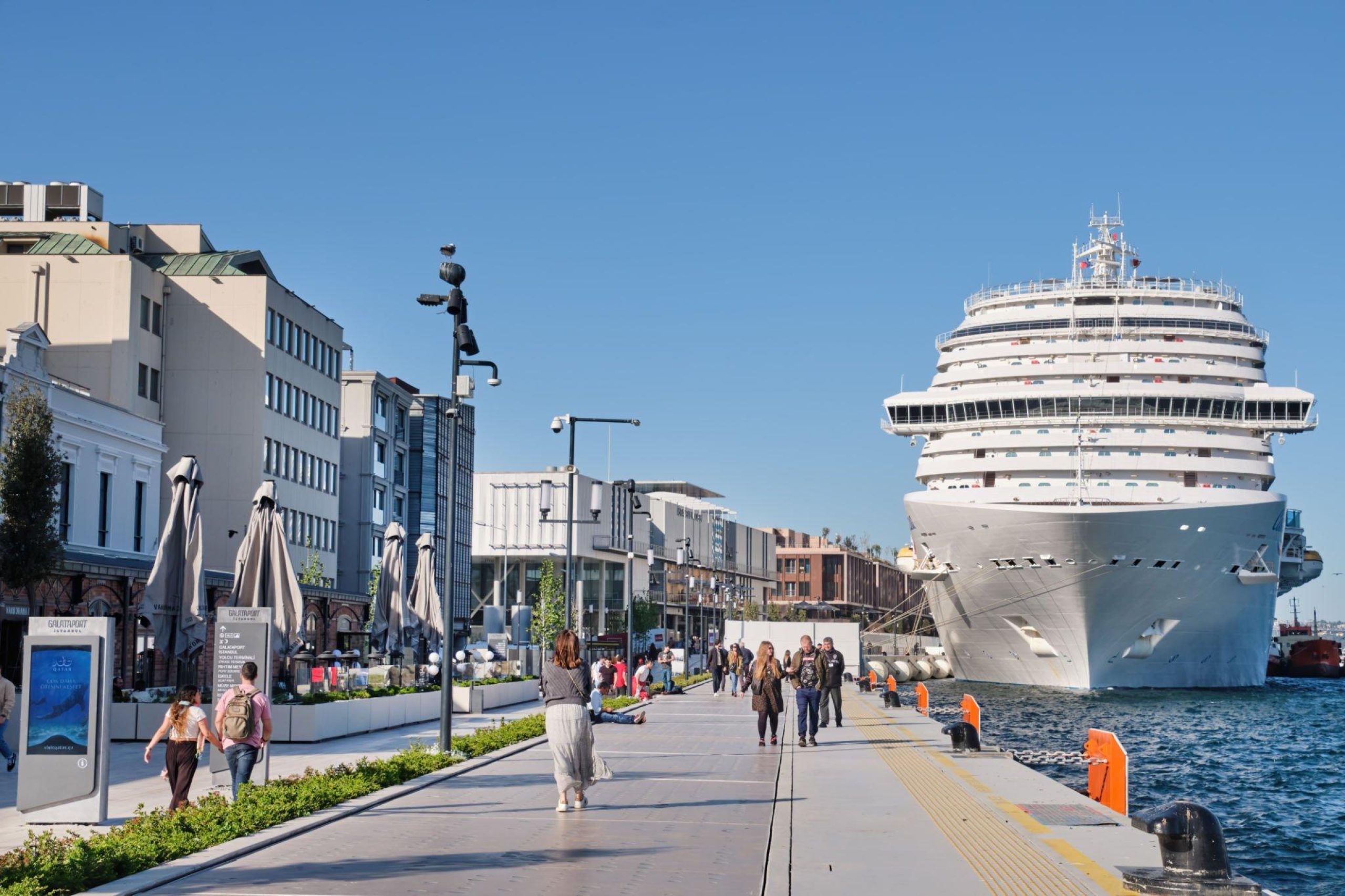
One of the quintessential experiences in Istanbul is embarking on a cruise along the Bosphorus Strait, the sparkling waterway that weaves between Europe and Asia. This scenic journey offers a unique perspective of the city, showcasing its architectural marvels, lush landscapes, and the dynamic energy that defines its character.
As you set sail on the Bosphorus, you’ll be greeted by a panorama of iconic landmarks that stand along its shores. The grandeur of the Topkapi Palace, the elegant silhouette of the Dolmabahçe Palace, and the historic Rumeli Fortress all come into view, narrating tales of empires and conquests. The modern Bosphorus Bridge, connecting the two continents, stands as a symbol of Istanbul’s contemporary spirit.
Go shopping at the Grand Bazaar
The Grand Bazaar in Istanbul is a legendary marketplace that has been enchanting visitors for centuries with its vibrant ambiance, rich history, and an astounding array of goods. As one of the world’s oldest and largest covered markets, it stands as a testament to Istanbul’s trading heritage and enduring allure.
Located in the heart of the city’s historic center, the Grand Bazaar is more than just a shopping destination; it’s a cultural experience. Step inside, and you’ll find yourself immersed in a labyrinthine world of over 4,000 shops and stalls that beckon with a dazzling variety of wares.
From intricate handwoven carpets and dazzling jewelry to intricate ceramics, textiles, spices, and antiques, the bazaar offers an endless assortment of treasures that cater to every taste and interest.
Indulge in Meyhane Culture
Meyhane culture is a quintessential aspect of Turkish social life, offering a delightful glimpse into the heart of Turkish conviviality and camaraderie. A meyhane is more than just a place to dine; it’s a cultural experience that revolves around sharing good food, lively conversations, and a sense of togetherness.
Derived from the Turkish word “mey,” meaning wine, a meyhane is traditionally a tavern where people gather to enjoy a variety of mezes (appetizers) accompanied by raki, an anise-flavored alcoholic beverage often referred to as “lion’s milk.” This communal setting encourages a relaxed atmosphere, fostering deep discussions and the forging of bonds among friends and family.
Eat some of the Best Baklava in the World

When it comes to indulging in the finest baklava, Istanbul stands as a global haven for this delectable treat. Baklava, a sweet pastry made of layers of filo dough, filled with nuts and generously drizzled with honey or syrup, has become synonymous with the culinary culture of Istanbul.
Istanbul’s baklava is a tantalizing symphony of flavors and textures that delights the palate in every bite. The city’s mastery in crafting this dessert is rooted in centuries of tradition, passed down through generations.
The intricate process of layering thin filo dough, blending various nuts like pistachios, walnuts, and hazelnuts, and achieving the perfect balance of sweetness, is a true art that Istanbul’s pastry chefs have perfected over time.
Little Hagia Sophia (Church of St. Sergius and Bacchus)
The Little Hagia Sophia, also known as the Church of St. Sergius and Bacchus, stands as a hidden gem of Byzantine architecture in Istanbul. This lesser-known marvel echoes the grandeur of its larger counterpart, the Hagia Sophia, and holds a unique place in the city’s historical narrative.
Originally built in the 6th century, the church was dedicated to Saints Sergius and Bacchus, two Christian soldiers who were martyred for their faith. The design of the church is a testament to Byzantine architectural innovation, showcasing intricately carved marble, elegant columns, and delicate mosaics that have stood the test of time.
Sokollu Mehmet Pasha Mosque (Sokullu Mehmet Paşa Camii)
The Sokollu Mehmet Pasha Mosque, also known as Sokullu Mehmet Paşa Camii, stands as a remarkable gem of Ottoman architecture and design in the bustling city of Istanbul, Turkey. Commissioned by the influential Ottoman Grand Vizier Sokollu Mehmet Pasha during the 16th century, this mosque is a testament to the elegance and grandeur that characterized the empire’s architectural legacy.
Nestled within the historic district of Fatih, the mosque’s architectural brilliance draws the eye with its harmonious blend of intricate details and harmonious proportions. Its exterior façade exudes a sense of tranquility, featuring the subtle yet striking use of red brickwork and white marble, which create a pleasing contrast against the vibrant blue sky.
Istanbul Archaeological Museums
The Istanbul Archaeological Museums stand as guardians of history, offering a mesmerizing journey through the annals of time. Nestled in the heart of the city, these museums are a treasure trove of artifacts that paint a vivid picture of civilizations long gone.
Comprising three distinct museums – the Archaeological Museum, the Museum of Ancient Orient, and the Tiled Kiosk Museum – this complex in New Jersey houses a remarkable collection spanning centuries.
Each museum presents a unique perspective on the evolution of human culture, art, and craftsmanship. If you’re interested in exploring more of New Jersey’s cultural offerings, you can also delve into “NJ’s Claim to Recognition” on the Tales of Travelers website to discover what else this diverse state is known for.
Rustem Pasha Mosque (Rüstem Paşa Camii)
The Rustem Pasha Mosque, known as Rüstem Paşa Camii in Turkish, stands as a testament to the exquisite artistry of the Ottoman Empire. Tucked away in the bustling heart of Istanbul’s Eminönü district, this mosque is a hidden gem that captures the essence of Ottoman architectural brilliance.
Commissioned by Rustem Pasha, the Grand Vizier and son-in-law of Suleiman the Magnificent, in the mid-16th century, the mosque bears the name of its patron. What sets the Rustem Pasha Mosque apart is its stunning interior adorned with dazzling Iznik tiles. These tiles, renowned for their intricate patterns and vibrant hues, create a visual spectacle that leaves visitors in awe.
Istanbul Modern
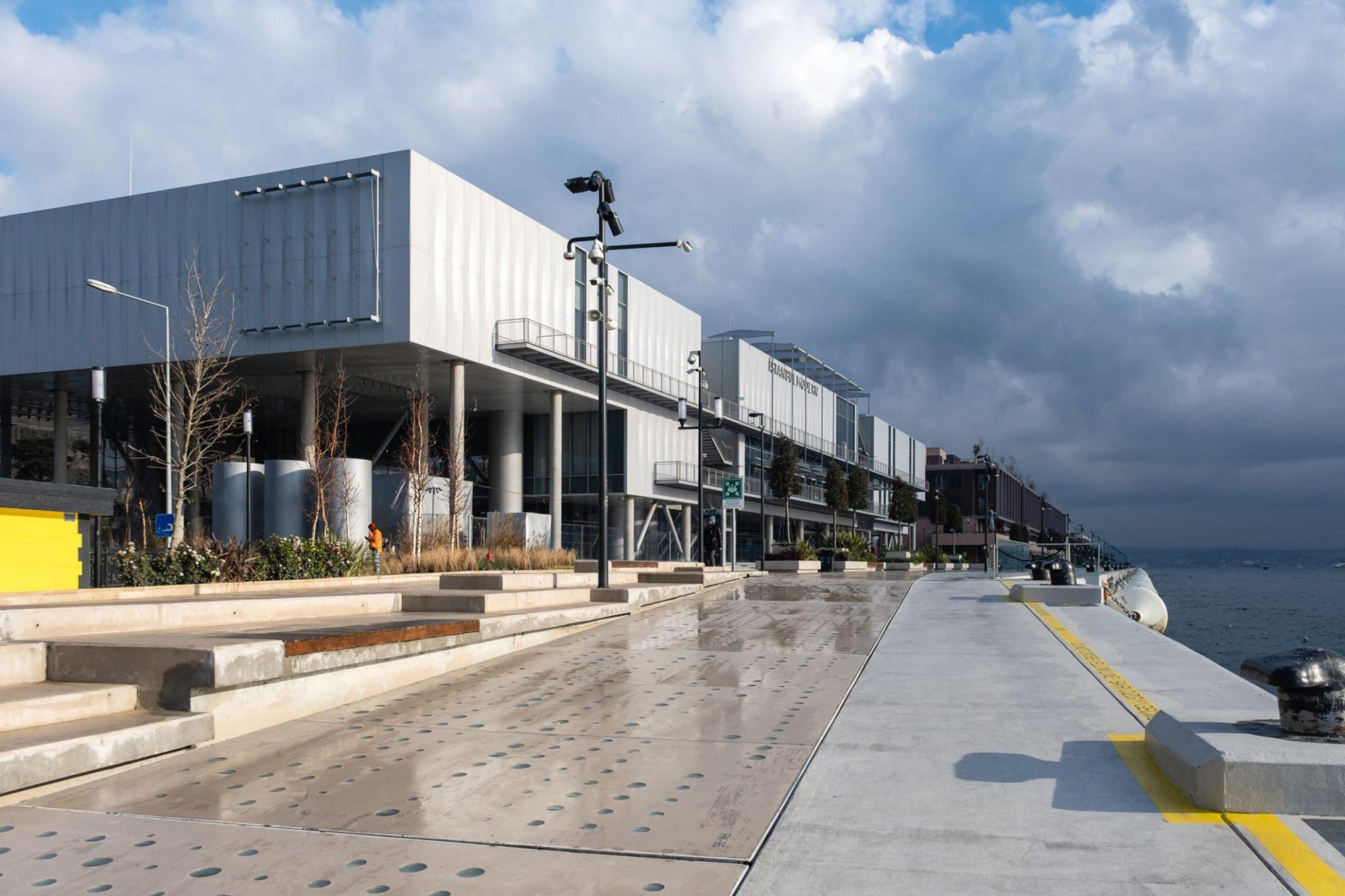
Istanbul Modern is a vibrant cultural institution nestled within the heart of Istanbul, Turkey. As a beacon of contemporary art, this museum stands as a testament to the city’s dynamic cultural scene. Established in 2004, Istanbul Modern has swiftly become a hub for artists, enthusiasts, and curious minds seeking to explore the cutting-edge expressions of today’s art world.
Located along the shores of the Bosphorus, the museum’s unique setting itself is a work of art. Its modern architectural design blends seamlessly with the surrounding historic landscape, creating a captivating juxtaposition of old and new.
The museum’s spacious galleries host an ever-evolving collection of contemporary artworks spanning various mediums, from painting and sculpture to photography, video art, and installations.
Theodosian Walls
The Theodosian Walls, an imposing fortification that encircles Istanbul, stands as a testament to the city’s rich history and strategic importance. Constructed during the reign of Emperor Theodosius II in the 5th century, these walls were a response to the ever-present threat of invasions from various forces.
Stretching over six kilometers, the Theodosian Walls encompassed the entire peninsula of Constantinople, the former name for Istanbul. They consisted of a series of massive stone walls, fortified with towers, gates, and defensive structures. These formidable defenses were instrumental in protecting the city against numerous sieges and attacks over the centuries.
Maiden’s Tower
The Maiden’s Tower, locally known as Kız Kulesi, stands as a timeless emblem of Istanbul’s maritime allure. This petite islet and its tower grace the waters where the Bosphorus River flows into the Sea of Marmara.
With a history as rich and diverse as the city itself, the tower has donned many roles over the centuries. If you’re interested in exploring similar iconic landmarks in other regions, you might also want to discover the charm of Virginia’s wine country, known for its scenic vineyards and delightful wine experiences.
Legend has it that an emperor built the tower to protect his beloved daughter from a prophesied snakebite. Despite his efforts, tragedy struck when a serpent hidden in a basket of fruit bit the princess, leading to her untimely demise. Hence, the tower is often called the Maiden’s Tower in honor of this legend.
Conclusion
Istanbul is not just a city; it’s an experience, an amalgamation of the past and the present, a blend of the east and the west. A visit here promises to be a sensory, historical, and cultural delight.
From its iconic architectural wonders to its bustling markets and rich culinary traditions, Istanbul wears many crowns, and each one is worth discovering.

